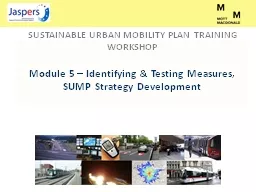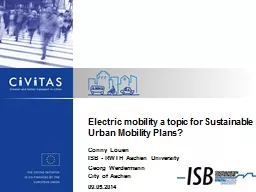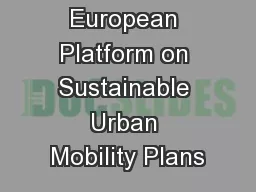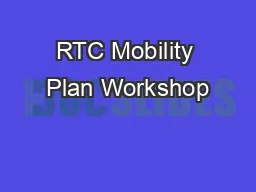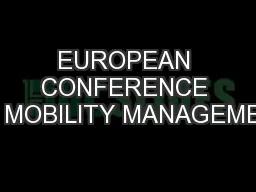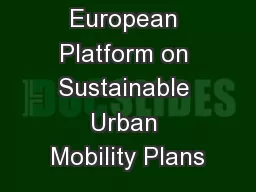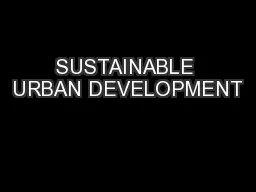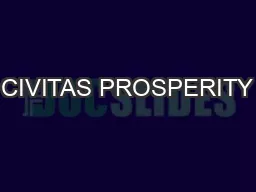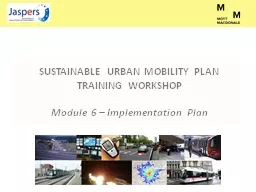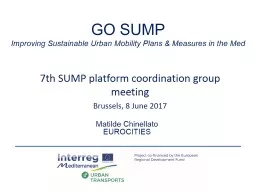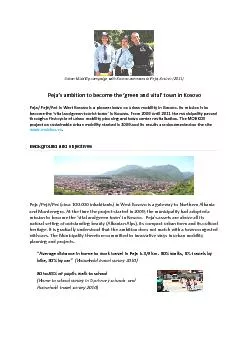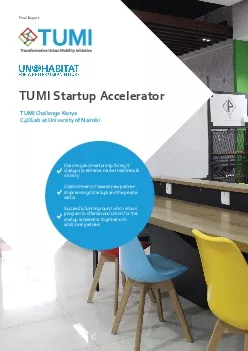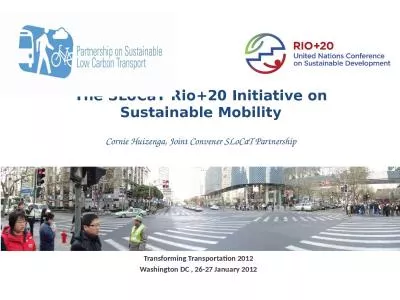PPT-SUSTAINABLE URBAN MOBILITY PLAN TRAINING WORKSHOP
Author : mitsue-stanley | Published Date : 2017-06-22
Module 5 Identifying amp Testing Measures SUMP Strategy Development Distinguish between measures and projects Defining optimum set of solutions for SUMP objectives
Presentation Embed Code
Download Presentation
Download Presentation The PPT/PDF document "SUSTAINABLE URBAN MOBILITY PLAN TRAINING..." is the property of its rightful owner. Permission is granted to download and print the materials on this website for personal, non-commercial use only, and to display it on your personal computer provided you do not modify the materials and that you retain all copyright notices contained in the materials. By downloading content from our website, you accept the terms of this agreement.
SUSTAINABLE URBAN MOBILITY PLAN TRAINING WORKSHOP: Transcript
Download Rules Of Document
"SUSTAINABLE URBAN MOBILITY PLAN TRAINING WORKSHOP"The content belongs to its owner. You may download and print it for personal use, without modification, and keep all copyright notices. By downloading, you agree to these terms.
Related Documents

